December 16, 2020 | Nadia Paredes, MA, LMFT, ATR
‘Twas the night before Christmas, when all through the house
There was a lot of screaming, and the tension arouse;
The family broke down and nobody cared,
That St Nicholas this year wouldn’t be there.
I was born and raised in Mexico, in a very loving (I would even dare say enmeshed) typical Catholic Latino family. My grandfather had died close to Christmas, so my father always tried his best to erase that feeling of loss and live the ideals of what he called “the American Christmas.” My dad swears the United States has the best holiday season in the world: the music, the lights, the chimney, the snow… and I have to admit I agree. It is built to make you feel all the warm, fuzzy feelings that the holidays are supposed to be. Families together, sharing a “cup of cheer” while the “merry bells are ringing.” As Even Burl Ives says, “It’s the best time of the year.” But is it really?
I personally have a love/hate relationship with the holiday season. It was my favorite time of year growing up. That was until my parents decided to announce their separation very loudly on Christmas Eve 2003. I thought we were the picture-perfect family, but apparently not so much. (If anyone is wondering, yes, this is why I became therapist.) As much as I have tried to erase that night from my memories, I can’t. And I have tried it all–talk therapy, art therapy, narrative therapy…. And I’ve healed, no doubt about it. But there will always be that feeling of sadness and depression that lingers for me. I denied it for many years, trying SO HARD to make the holidays work, decorating the house, throwing amazing parties. But then January came, and I would ALWAYS get very sick. So being in the field of mental health, of course at some point I had to deal with my reality: I am always sad starting December and all the way through January.
My first year living with my husband, I decided to be honest with myself and painted how I truly felt about the holidays. I saw myself next to a gigantic tree as a tiny lost baby chicken, who truly wanted to belong but couldn’t. I showed it to my husband and was surprised when he responded by drawing another baby chick next to mine as well as a tiny Christmas tree. He’s an engineer with no experience with art therapy, but a wife who does it for a living. I knew this was his attempt to show me that he was with me and my suffering. And I will say, having that space to hold the pain and be with it was so healing that it has become a crucial part of my holiday season ever since.
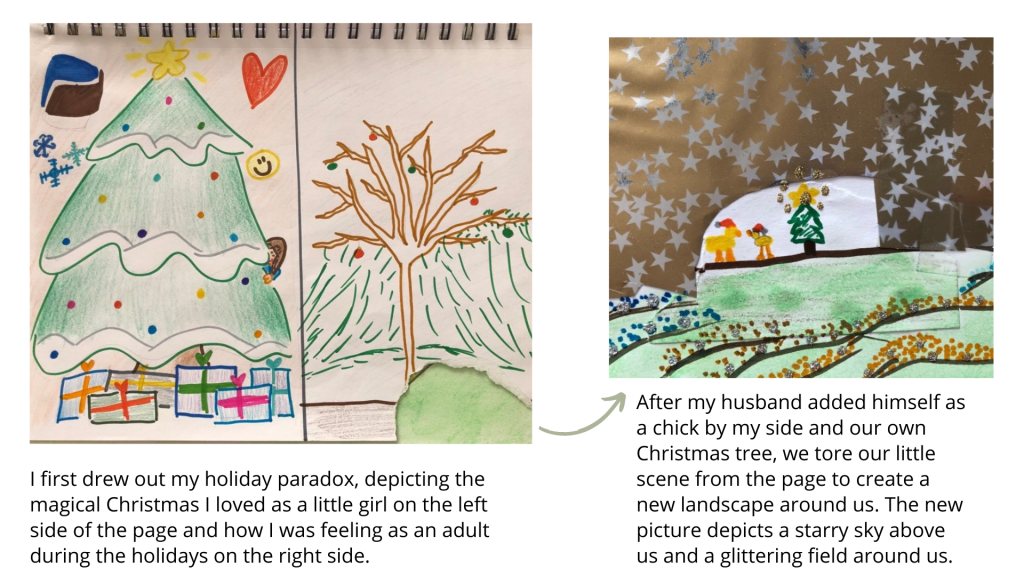
I can now proudly say that I live in a paradox throughout the holidays. I allow myself to do the things I love, like singing carols, decorating, and wearing cheesy sweaters… But I also give myself the space to grieve. A space to be sad, to wish that that December 24th had never happened or to be very angry about it.
This holiday season will be particularly hard for so many of us. For some, family and friend circles may have fallen apart due to differing political views or divided opinions about racial and social movements. For others, the pandemic has brought immense loss or is physically impeding us from being together. It is impossible to pretend, especially this year, that we can have mistletoe to kiss under and everything will be fine—not only because we are wearing masks and staying six feet apart, but because we may be marking the holidays alone. Many of us live miles or continents away from our loved ones, and even if they live next door, the risk of spreading the virus may be keeping us apart.
5 Ways to Cope with the Holiday Season
While how I cope has changed over the years, I’d like to share my top 5 suggestions (in case you are in need of taking same painful yet cheery space for yourself):
1) Engage in art making.
I am an art therapist after all. Please, paint the holiday pain out!
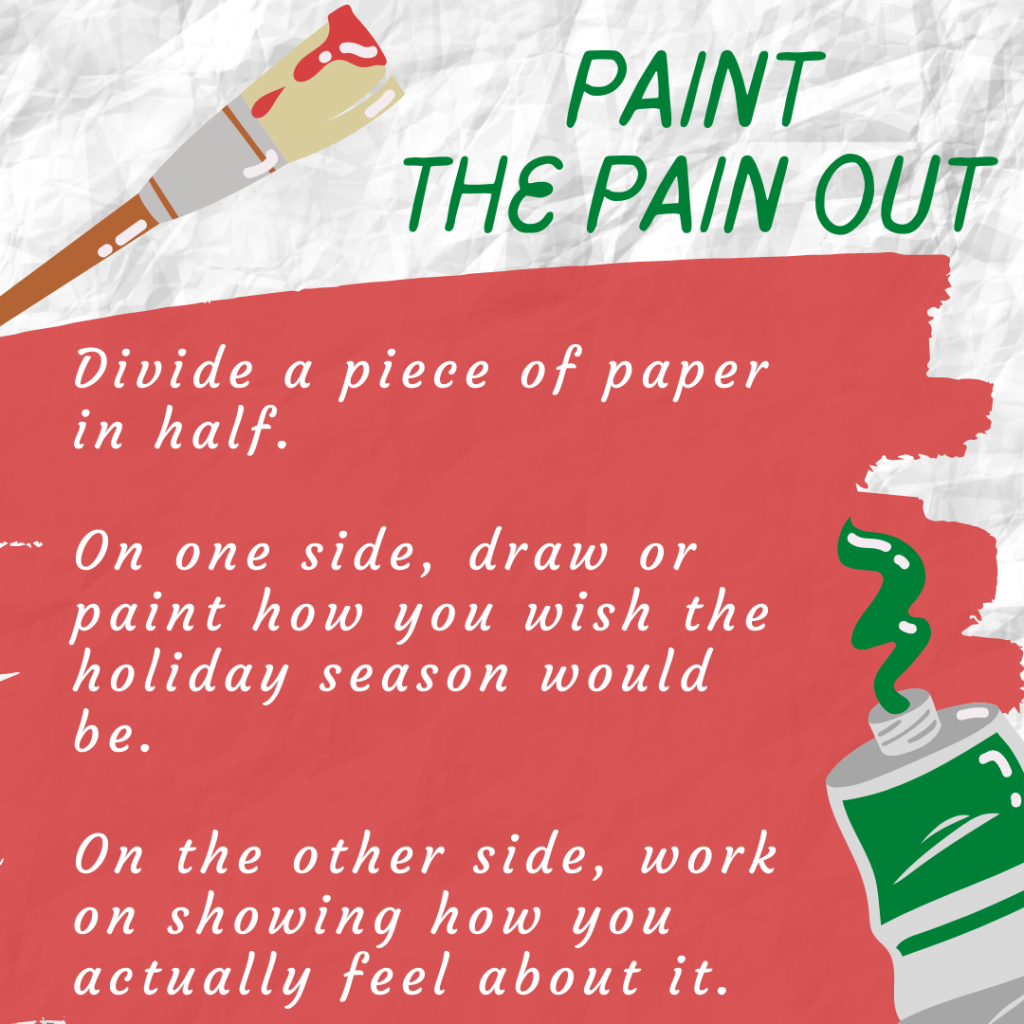
2) Watch some sad movies.
I remember one year I decided to embrace the sad, watching sad movies and listening to sad music. It gave me the space to cry it all out.
3) Bake for loved ones.
If you are a friend of mine, you know of my famous Rum Brownies. There are times when I dread the time it takes to make them, but I know how many smiles they bring to others. And that makes me feel better. So I bake, and even more when I am not feeling it at all. Because sometimes making others happy can make you feel happy too.
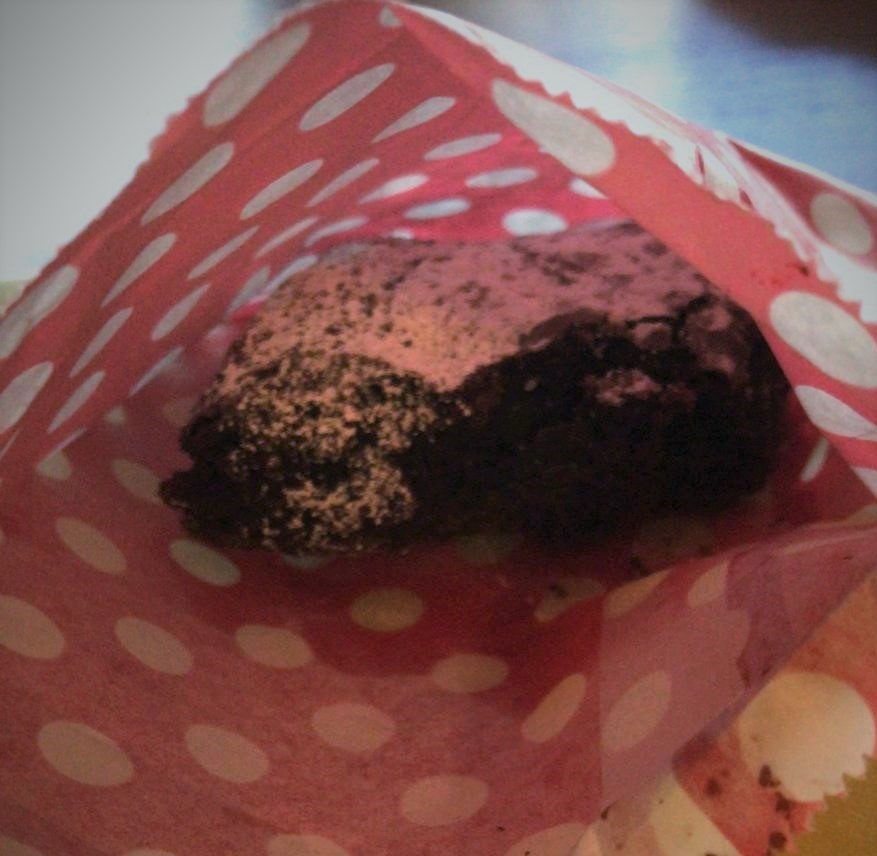
A few weeks ago I baked a batch and left one on my friend’s doorstep.
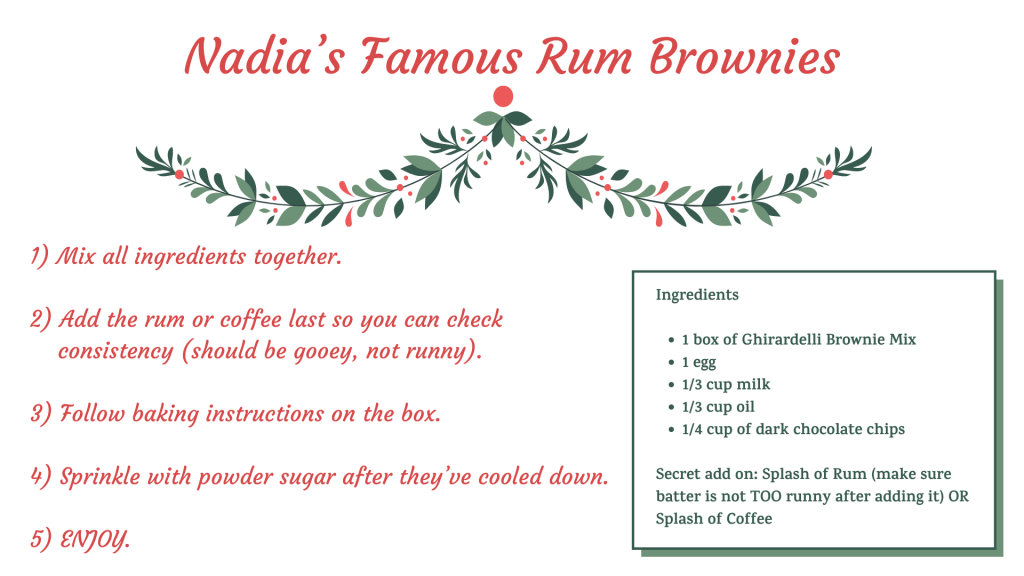
4) Try a virtual cook off.
Nothing brings us together like food if you ask me. (You may be noticing a theme here). I usually do a potluck with my closest friends as they remind me that family can also be chosen. This year though, I am recommending doing a Zoom cook off where everyone buys the same ingredients, so everyone shares the same meal virtually.
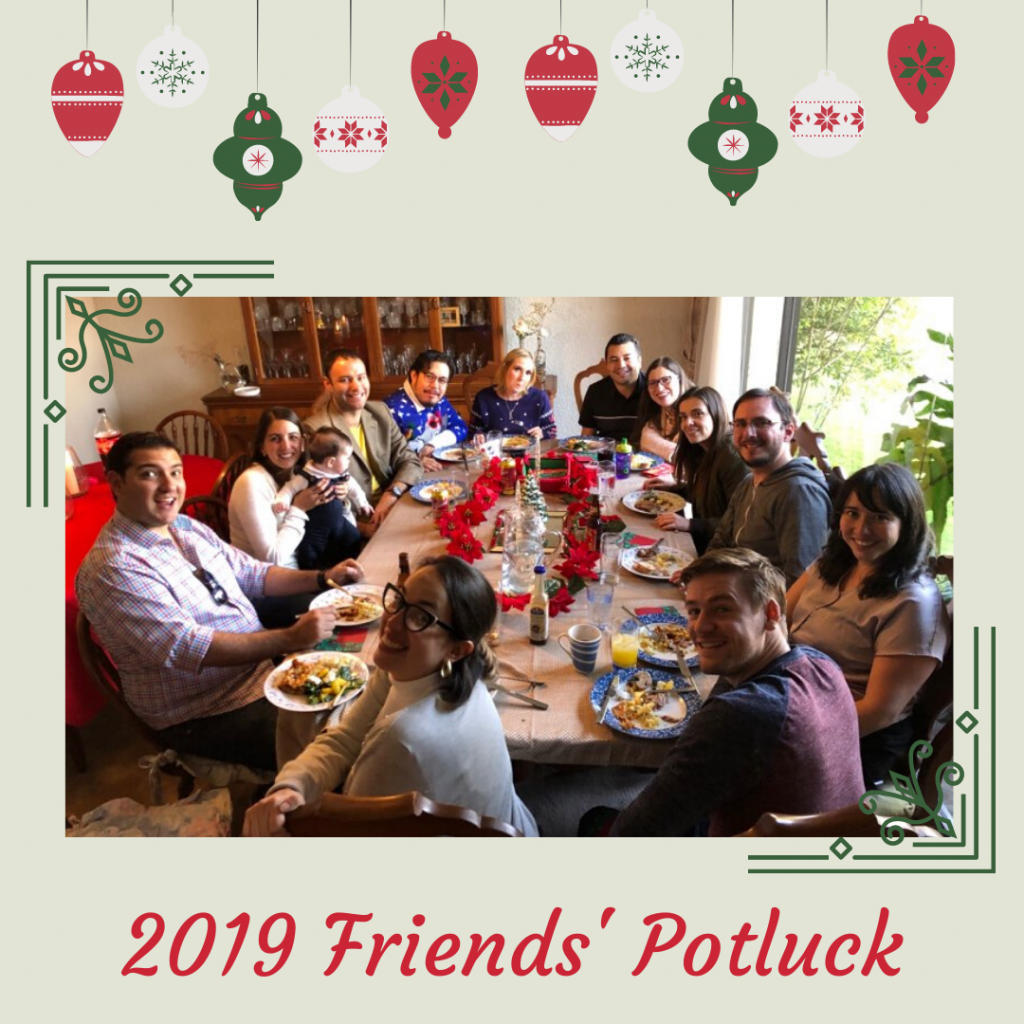
5) Be gentle with yourself.
I know I have overcompensated by doing a lot throughout the holiday season–decorating, buying and wrapping gifts, volunteering, donating things, cooking for others. But I learned this: Keeping yourself busy will not take the pain away. Be kind to yourself, and take time to rest and rejuvenate.
In short, my advice to you, as someone who has hated and loved this season for many years, is to be patient, be compassionate, be loving… towards yourself. And make art. ALWAYS make art.
Happy Holidays, everyone.
Nadia Paredes, MA, LMFT, ATR
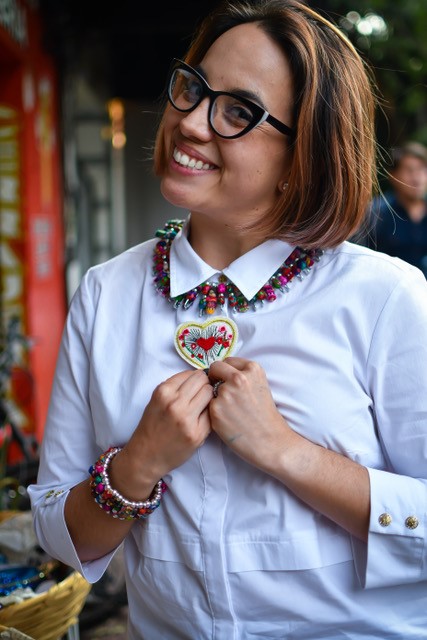
Nadia helps people connect with their inner creativity and feed their mind through her empowered art programs. Nadia is the founder of Art Food Dreamers, a bilingual resource for empowering, healing, and artistic inspiration. With expertise and training as an Art Therapist, Intuition Painting Facilitator and a Licensed Martial and Family Therapist, Nadia creates programs for transformation, creativity, and art making as a mindfulness practice. Her offerings include Introspective Arts Programs, Intuition Painting Sessions, and Art Beginnings. Her psycho-educational approach to art during COVID was featured in Romper Magazine and she was highlighted in L.A. Voyage Magazine as Positive Community Builder. Nadia holds a professorship in Universidad Anahuac in Mexico City teaching about Art as a preventive Mental Health practice.
